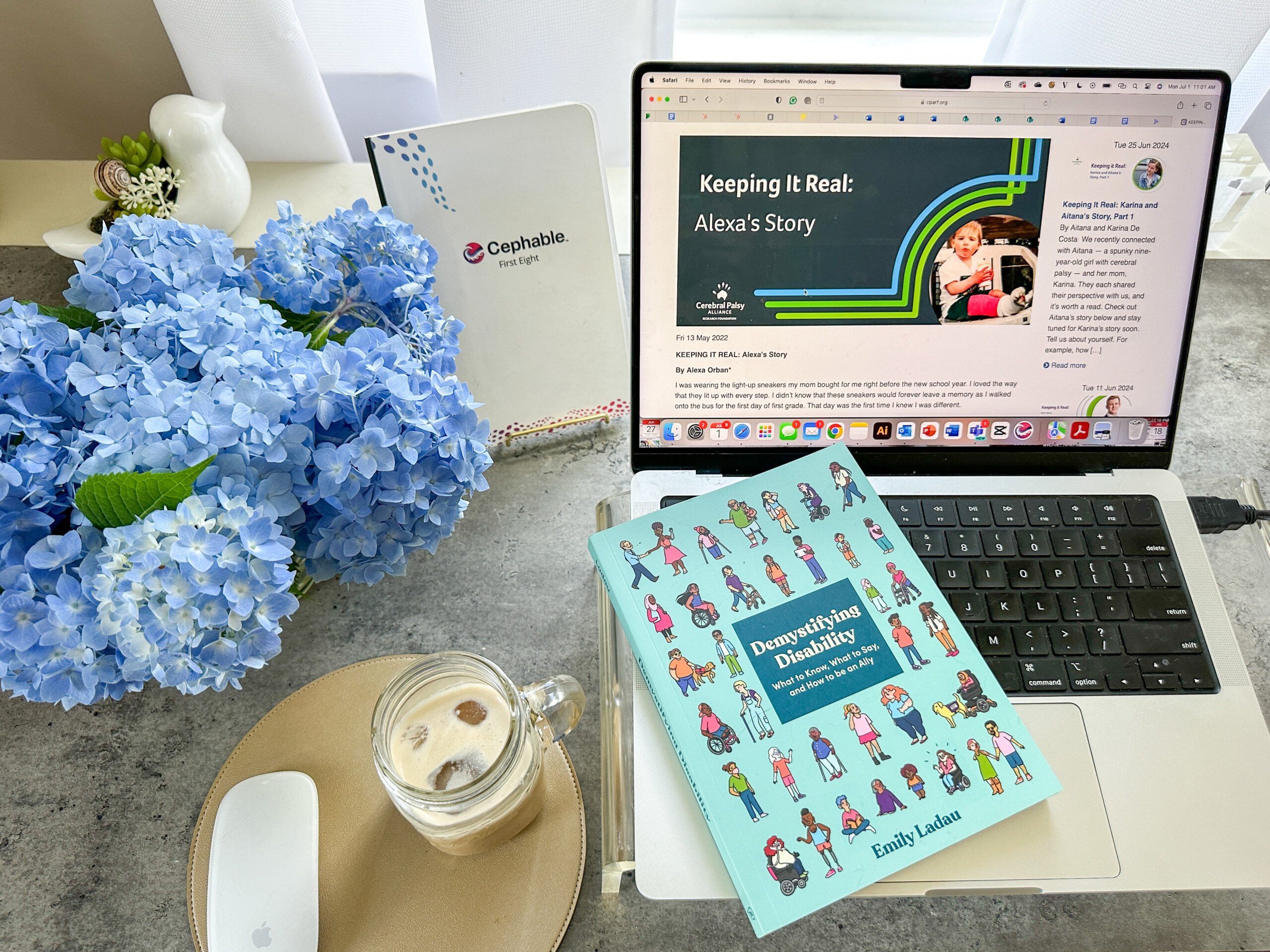Written by: Alexa Orban, Director of Marketing
As Disability Pride Month comes to a close, I’ve been reflecting on the significance of this month and what it means to me personally. While disability is a central part of my life, it might not be for many of you—and that’s okay!
From my journey with cerebral palsy, my advocacy and education efforts, to my role at Cephable, disability is a constant presence in my life. It shapes my experiences from the moment I wake up until I go to sleep.
As we wrap up this month, I’d like to share a few things that can help us all keep the momentum and action of Disability Pride alive throughout the year.
1. Education
If you’re not sure where to start learning about disability, I highly recommend these books:
- Emily Ladau’s Demystifying Disability: This book provides an excellent foundation for understanding the broad spectrum of disability and the experiences of those within the disabled community.
- Alice Wong’s Disability Visibility: First-Person Stories from the Twenty-First Century: A powerful anthology of essays by disabled authors, offering a wide range of perspectives and experiences.
- Rebekah Taussig’s Sitting Pretty: The View from My Ordinary Resilient Disabled Body: A collection of essays that offer a nuanced and engaging perspective on life as a disabled person.
There are so many more resources that I can list- it’s always great to see what others are sharing and talking about in the community.
2. Stories
Five years ago, I began sharing my personal story of living with cerebral palsy. While my perspective is just one among many, it’s crucial to recognize that disability is not a one-size-fits-all experience. I encourage you to explore and learn from the diverse stories and experiences of others within the disabled community.
Here are a few ways to explore these stories:
- Social Media and Blogs: Follow disabled creators and activists who share their experiences and insights online.
- Podcasts: There are numerous podcasts hosted by disabled individuals, covering a wide range of topics from daily life to advocacy and activism. Some notable ones include Disability Visibility by Alice Wong and The Accessible Stall by Kyle Khachadurian and Emily Ladau.
- Documentaries and Films: Visual storytelling can be a powerful way to understand the lived experiences of disabled people. Films like Crip Camp: A Disability Revolution and documentaries available on various streaming platforms offer compelling insights.
- Community Engagement: Attend events, webinars, and discussions. Engaging in these conversations can provide deeper, firsthand perspectives on the diverse experiences within the community.
3. Accessibility
Disability Pride Month is deeply rooted in the concept of accessibility, defined as “the quality of being able to be reached or entered.” The Americans with Disabilities Act (ADA), signed into law in 1990, was a monumental step toward accessibility. However, we still have a long way to go. Through my work at Cephable, our team is committed to enhancing digital accessibility, and contributing to the broader movement for a more inclusive world, but it doesn’t stop with us.
Accessibility is more than just checking the box for an accommodation. A great take on accessibility can be found on Julia Franklin’s blog post: Is Creativity Accessible in the Workplace? The Power of Playfulness & Inclusion
4. Support
Reflecting on the support I’ve received from my family, particularly my mom, reminds me of the importance of allyship. Her unwavering encouragement has been invaluable to me. Becoming an ally to the disabled community can take many forms, from supporting loved ones to engaging with and sharing content from disabled creators on social media.
As we conclude Disability Pride Month, let’s remember that disability and accessibility are not just topics for one month—they’re year-round commitments. Thank you for taking the time to reflect with me. Let’s continue to advocate for and celebrate accessibility every day.

Subscribe to Our Newsletter
Subscribe to our InkSights newsletter for updates, the latest innovations in AT, community announcements, and more!

